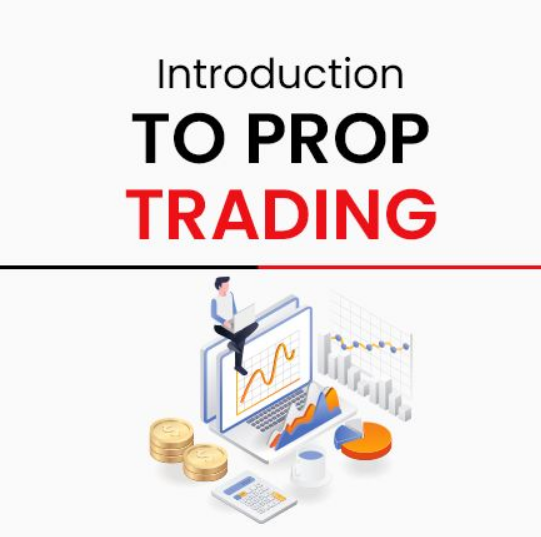Automated Backtesting Tools for Prop Trading: Expert Strategies
In today’s competitive trading landscape, sophisticated proprietary trading (prop trading) firms require robust, automated backtesting tools to validate strategies before deploying capital in live markets. Whether you are a junior trader or a seasoned quant, understanding the intricacies of these tools can significantly enhance your risk management procedures and overall trading performance. This article details the advanced backtesting concepts, nuanced tool comparisons, and actionable insights essential for any prop trading professional.
Understanding the Role of Automated Backtesting in Prop Trading
Automated backtesting is the backbone of a systematic trading approach, enabling traders to simulate strategies against historical market data. For prop trading professionals, the precision of these simulations is critical, given the high stakes involved. By automating backtesting, firms can not only reduce human error but also iterate strategies faster with more reliable results.
Why Backtesting Matters
- Verifies strategy robustness over various market conditions.
- Highlights potential pitfalls such as overfitting and survivorship bias.
- Helps identify optimal parameter settings and risk management thresholds.
Implementing a rigorous backtesting regimen ensures that strategy performance metrics such as Sharpe ratios, maximum drawdown, and profit factors align with the stringent standards expected in prop trading environments.
Figure 1: An example interface of a backtesting tool showcasing key performance metrics.
Key Advanced Backtesting Concepts for Prop Trading
Beyond basic strategy testing, advanced concepts such as walk-forward optimization, rigorous out-of-sample testing, and integrated forward testing play pivotal roles in refining trading systems.
Common Pitfalls in Backtesting
Efficiently identifying and mitigating common pitfalls is crucial. Traders must watch for:
- Overfitting: When a strategy is too closely aligned with historical data, reducing its predictive power in live markets.
- Look-Ahead Bias: Using information in backtesting that would not have been known in real time.
- Survivorship Bias: Ignoring companies or assets that did not survive through the sample period, skewing the strategy’s apparent success.
- Data Snooping: Excessive tweaking of parameters based on historical data which can lead to misleading results.
Walk-Forward Optimization Versus Traditional Backtesting
Traditional backtesting can fall short when market conditions shift rapidly. Walk-forward optimization addresses this by recalibrating strategy parameters on rolling time windows, thereby simulating real market adjustments over time. This approach delivers a more robust view of strategy resilience and helps in identifying dynamic adjustments required for volatile market periods.
Comparative Analysis of Top Automated Backtesting Tools
For prop trading, selecting the right automated backtesting tool is key. Below is an in-depth comparison of widely recognized platforms, each catering to both firm-level and retail trader requirements:
| Tool | Backtesting Features | Data Quality & Availability | Integration Capabilities | Pricing & Use Cases |
|---|---|---|---|---|
| TradingView | Vectorized backtesting, customizable slippage & commission handling | Deep historical data covering multiple asset classes | API access, broker integration, extensive script library | Free tier available; premium upgrades for team collaboration, suitable for both retail and prop trading desks |
| MetaTrader 5 | Event-driven testing, advanced optimization tools | Robust tick and bar data for forex and CFDs | Direct broker integration, supports MQL5 community scripts | Cost-effective; highly popular among retail traders and smaller prop firms |
| NinjaTrader | Extensive strategy analyzer, automated parameter optimization | High-quality historical data feed with real-time updates | Integration with various data feeds and brokerage accounts | Subscription-based; ideal for advanced backtesting and firm-level strategies |
| Backtrader | Python-based, fully customizable event-driven framework | Flexible data feeds integration from diverse sources | Open API for integrations, community driven extensions | Open-source; best for quants and programmers looking for custom solutions |
Integrating Advanced Code and Automation
Automated backtesting not only runs through historical data but can also execute advanced parameter optimizations and generate detailed performance reports. Below is an example of a Python snippet using Backtrader to automate these tasks:
import backtrader as bt
class TestStrategy(bt.Strategy):
params = (('maperiod', 15), )
def __init__(self):
self.sma = bt.indicators.SimpleMovingAverage(self.data.close, period=self.params.maperiod)
def next(self):
if self.data.close[0] > self.sma[0]:
self.buy(size=10)
elif self.data.close[0] < self.sma[0]:
self.sell(size=10)
cerebro = bt.Cerebro()
cerebro.addstrategy(TestStrategy)
data = bt.feeds.YahooFinanceData(dataname='AAPL', fromdate=datetime(2019, 1, 1), todate=datetime(2020, 12, 31))
cerebro.adddata(data)
results = cerebro.run()
print('Final Portfolio Value: ', cerebro.broker.getvalue())
This code demonstrates a basic SMA crossover strategy, but in a prop trading environment, such scripts are extended with more sophisticated measures like risk management overlays, multiple asset integration, and automated scenario analysis.
Strategies to Mitigate Backtesting Challenges
To effectively bridge the gap between historical simulations and live trading, traders must adopt several best practices:
Out-of-Sample Testing
Separating data into in-sample and out-of-sample sets helps ensure that backtested strategies are not merely overfitted to historical performance. This approach provides a more realistic expectation of future performance by validating the strategy on data not seen during the optimization phase.
Integration with Forward Testing
Once a strategy passes out-of-sample tests, incorporating forward testing (paper trading) is essential. This step monitors real-time performance and helps fine-tune the strategy before actual capital is deployed. Key metrics to observe include:
- Real-time Sharpe ratio improvements
- Reduction in maximum drawdown during live scenarios
- Smoother equity curve transitions from simulation to live trading
Figure 2: Forward testing report chart demonstrating key performance improvements and reduced drawdown.
Prop Trading Firm Insights and Case Studies
Many leading prop trading firms, such as FTMO, Apex Trader Funding, and Topstep, embrace rigorous backtesting practices combined with strict evaluation criteria:
Firm Evaluation Processes and Risk Controls
These firms typically enforce:
- Profit Targets: Phase one targets in the range of 8-10%.
- Risk Management: Daily loss limits (4-5%) and maximum drawdown rules (10-12%).
- Payout Structures: Profit splits ranging from 70% to 90%, ensuring alignment of trader-firm interests.
Case studies from these firms reveal that thorough backtesting, combined with discipline in strategy execution, enables traders to achieve quantifiable improvements such as a 20-30% enhancement in the Sharpe ratio and notable reduction in drawdowns. For example, one case study demonstrated a prop trading team reducing their maximum drawdown from 12% to nearly 8% after integrating advanced automated backtesting features through platforms like NinjaTrader and TradingView.
Industry Insights and Pro Tips
Pro Tip: Always adjust for commission, slippage, and latency when tuning your backtesting settings. Even minor deviations during live trading can lead to significant performance gaps if not accounted for in your models.
Regulatory Considerations for Prop Trading Firms
Prop trading firms must navigate strict regulatory frameworks, including MiFID II in Europe and NFA/CFTC rules in the United States. Ensuring compliance means:
- Adhering to defined risk limits and maintaining transparent reporting practices.
- Employing robust surveillance systems to monitor real-time trading activities.
- Regularly updating backtesting models to reflect the latest market conditions and regulatory adjustments.
For further detailed regulatory guidelines, traders and firms should review the official NFA website (https://www.nfa.futures.org/), ensuring that adherence to these frameworks is maintained consistently.
Integrating Results into a Cohesive Trading Strategy
It is crucial for traders to not only rely on backtesting but also make a concerted effort to integrate results into a dynamic strategy that includes regular forward testing. Integrating backtesting with real-time experimentation helps create a loop of continuous improvement, ensuring the strategy remains robust under varying market conditions. Internal resources such as advanced prop trading strategy guides and articles on risk management best practices can be invaluable in this process.
In conclusion, leveraging automated backtesting tools is essential for prop trading success. By combining technical rigor with iterative strategy improvements, traders across all experience levels can build more resilient and profitable trading systems. Take the next step by applying these insights, refining your parameters, and monitoring both historical and forward-test results to continuously improve your trading framework.
As you progress in your trading journey, always ensure that every adjustment is backed by deep analysis, and never hesitate to revisit and refine your models as market conditions evolve.
Next Step: Begin with a detailed review of your current backtesting setup, integrate a walk-forward optimization module, and align your results with live market simulations. Regular updates to your data and continuous learning through industry research are key to staying ahead in this dynamic environment.
As of April 2025, these methodologies continue to set the benchmark for effective prop trading, ensuring that both individual traders and firms remain competitive and compliant in today’s ever-changing financial markets.







